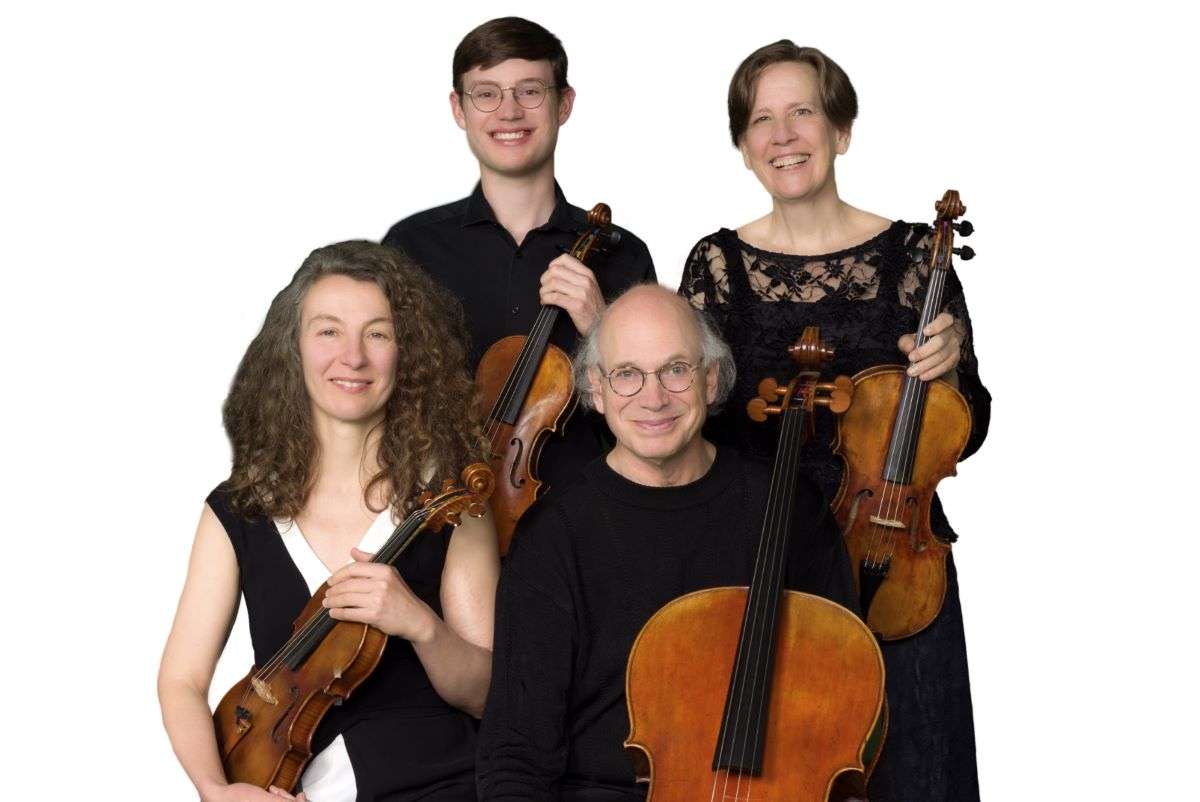As I Heard It: DaPonte String Quartet’s Second Concert Review
- August 9th 2024
- Arts & Entertainment

Philipp Elssner, violin; Kirsten Monke, viola; Lydia Forbes, violin; Myles Jordan, cello
By Dr. Morton Gold
A nearly full house was present for the second concert presented by the DaPonte String Quartet at the Sanford-Springvale Historical Museum last Sunday. The group consists of violinists Lydia Forbes and Philipp Elssner, violist Kirsten Monke and cellist Myles Jordan. I gave them a glowing review at their previous concert and based on what I heard this time, I was modest in singing their praises.
Part of their mission is “cultivating appreciation for the art of the string quartet through distinctive performance and educational outreach.” I would affirm that this group did exactly that on Sunday.
Yes, they could have chosen an easier (for them) program and one that had more audience appeal, perhaps a quartet by Haydn, or an earlier one by Beethoven or Schubert. The works they chose, “Mozart String Quartet, No. 22” and “Beethoven String Quartet, Op. 127,” were challenging for each performer and, by extension. the audience. On the other hand, where would one have had the opportunity to hear these works performed so lovingly and musically? By playing these compositions, they were true to their mission and to themselves.
They played brilliantly with no detail being unimportant, with precise attacks, pinpoint intonation and exacting attention to dynamics. Mozart is not remembered as having a sense of humor, but I would point out the conclusion of this quartet was written with tongue in cheek. To please a king, Mozart wrote a prominent cello part, but he also gave all the other instruments significant solos. A good example of this can be found in the second movement. The third movement is no typical 18th century oom-pa-pa piece either, calling for virtuoso performances by each member. Again, while he wanted (had to) give the cello a prominent part (the king was a cellist), nevertheless the quartet was an ensemble of equals. This was a new concept for the time.
After a brief intermission, we were treated to a performance of “Beethoven String Quartet, Op. 127,” the first of that master’s late period creations. For this performance, Forbes, who played second violin in the Mozart, assumed the role of first violin, exchanging places with Elssner. For those who are unaware, the role of second violin is as demanding as the first violin, but that part is usually not as showy. Not in this composition. I can readily understand why so many find this string quartet difficult to fathom. In it, Beethoven casts aside many conventions of the day. The highlight of the piece for me was the simply gorgeous slow movement. It stops when the composer seems to say that he has said all that he can say and then stops. Beethoven did have a wicked sense of humor. In the last movement, the work seems to come to a triumphant conclusion, but then seems to go on a bit and then, POW, it ends. (Fooled ya, didn’t I?)
What these two appearances by the Da Ponte String Quartet tell me is that they will always pick unusual works from the quartet repertoire and give those works a superb reading. I look forward to their next performance. By reputation I knew they were good; I didn’t realize just how good they really are.






